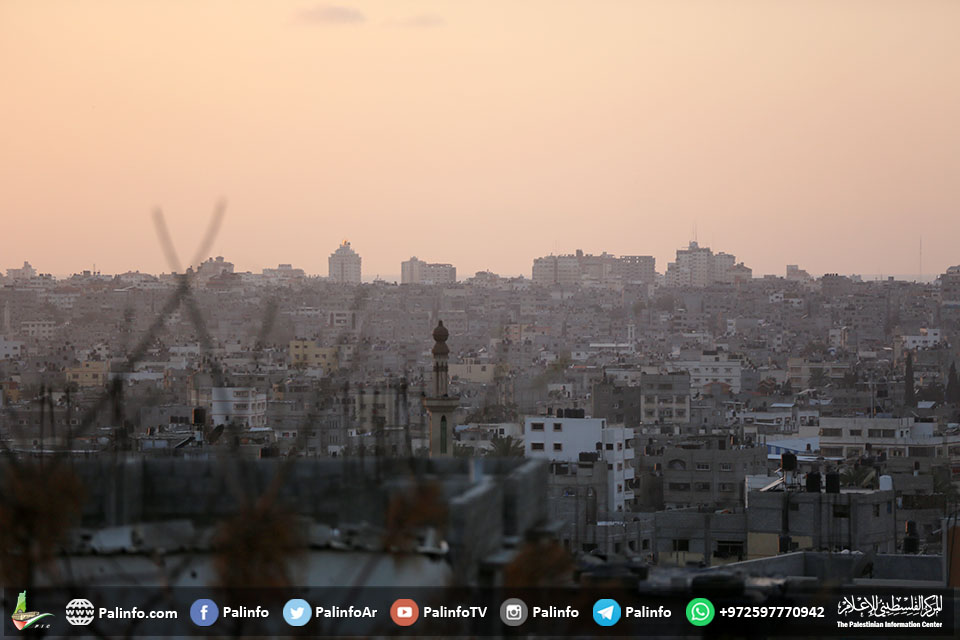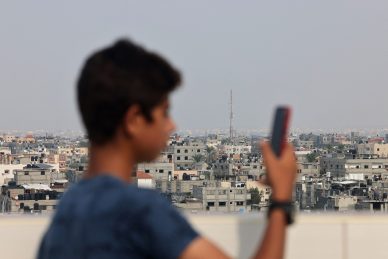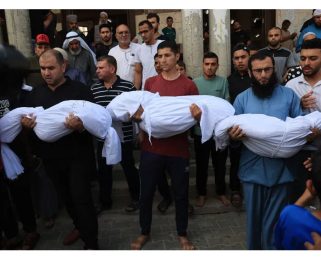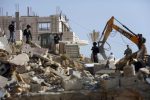Al-Shuja’iya neighborhood is the gate of the eastern Gaza Strip and the largest among its neighborhoods. It is located to the east of the coastal enclave and serves as an advanced fortification in the face of the Israeli occupation which watches Gaza from behind the thin border line.
The roots of this neighborhood date back to the battles between the Ayyubids and the Crusaders in 637 AH /1239 AD where it was named after the Kurdish hero Shujauddin Othman Al-Kurdi when Muslims won a battle in that area which followed the battle of Hittin.
History of Al-Shuja’iya
During the Mamluk era especially during the eighth century AH the city of Gaza was characterized by urban prosperity and great commercial progress. It was called ‘Gaza Kingdom’ and ‘Gaza Mahrousa’ with Khalil Alzahri describing it as “The King’s Tunnel.”
According to Palestinian historian Salim al-Mubaid economic progress included Al-Shuja’iya neighborhood where urbanization had taken place. Mosques baths and schools were established in the neighborhood and it seemed as if it was an independent city.
The neighborhood hosts Gaza’s most precious antiques and history as it is a home for old mosques graveyards and temples. It is divided into two sections: The South known as the Turkmen neighborhood with an area of 4016 dunums and The North known as Ajdida with an area of 4958 dunums.
More than 150000 people live in Al-Shuja’iya neighborhood which is more developed than other nearby neighborhoods such as Al-Daraj Al-Tuffah and Al-Zaytun making it the largest in Gaza City.
Al-Shuja’iya landmarks
Shujaiya has the largest market in Gaza which is called Souq Al Jum’ah or Friday’s Market and it is located in the Old City where sheep and cattle traders come on Fridays to sell their animals.
One of the most important landmarks of this great neighborhood is the Mosque of Ahmed bin Othman or what the people of the neighborhood call the Great Mosque which is located in the heart of the residential and commercial neighborhood. This mosque hosts the tomb of Yulkhuja one of the Mamluks of Sultan Al-Zaher Barqouq. He was the deputy of the city of Gaza in 849 AH and was buried in the mosque. This beautiful neighborhood also has other historical landmarks such as the Court Mosque which used to be an important school – as written above the stones of its northern door which is now shut down.
Among the mosques is the Al-Hawashi Mosque the al-Sayeda Ruqaya Mosque the Ali Ibn Marwan Mosque on Salah al-Din Street the Islah Mosque Tariq Ibn Ziyad the Al-Quzmmari Mosque the Darqutni Mosque Zu Alnurain Mosque and Ali bin Abitalib Mosque which was used as a bath but it is no longer there now.
To the east of the neighborhood is the Tunisian Graveyard or the Tiflisi Graveyard where it is believed that one of the graves belong to Samson.
Al-Shujaiya neighborhood overlooks a high hill that distinguishes it from the rest of the Gaza Strip called Al-Mentar Hill which is located at the far east of the neighborhood. It is about 90 meters above the sea level according to the Palestinian historian Salim al-Mubaid.
Al-Mentar is the highest hill in the Gaza Strip which made it a strategic military location and a key site to Gaza City. It was occupied by the soldiers of Napoleon Bonaparte and thousands of Allied soldiers were killed near it during the First World War when they were fighting the Ottoman forces. They were buried in the First World War Graveyard in Gaza.
It is noteworthy that Al-Mentar Hill received a special status in the city and became the home for a cultural season in the past. The Hill has become independent from Gaza city when the Crusaders destroyed the wall of Gaza city during the Crusades campaign on Palestine.
Al-Shujaiya neighborhood is dominated by religious commitment and family cohesion. Tribal and family connections led many families in the neighborhood to form reconciliation committees to solve family disputes throughout the Gaza Strip.
Al-Shujaiya neighborhood is home for the major known tribes in the Gaza Strip most notably Helis Jendia Hasnin Jaabari Quriqi Almghani Hajjaj and other dozens of extended families.
A history of resistance
As the first intifada broke out Al-Shujaiya neighborhood was the scene of an armed confrontation between the Palestinian resistance and the Israeli occupation army and it had the largest share in the Israeli attacks to this day.
Al-Shujaiya is characterized by embracing all Palestinian factions where many resistance groups started there. It witnessed the first beginnings of the PLO and most of the national and Islamic movements.
The most prominent resistance leaders lived in Al-Shujaiya neighborhood; it was a home for the commander of the resistance Ahmad al-Jaabari as well as the late Um Nidal Farahat and the General Secretary of the Palestinian Islamic Jihad Ramadan Shallah.
Al-Shujaiya neighborhood the eastern gate of Gaza city saw the fiercest battles between the Palestinian resistance and the Israeli soldiers during the consecutive offensives launched by Israel on the Gaza Strip.
The Israeli occupation forces used unprecedented intensity of firepower during the last aggression which resulted in hundreds of Palestinian casualties following the killing of Israeli soldiers when they attempted to invade the neighborhood. The intensive raids and bombardment also followed the capture of one of the soldiers during the battles in the summer of 2014.
Sunday July 20 2014 saw the ugliest crime committed against the neighborhood and its inhabitants. The neighborhood was subjected to indiscriminate shelling by Israeli artillery without warning. This led to the fall of more than 70 citizens and the injury of hundreds others.
The neighborhood is best known for resistance in the Gaza Strip where every single house has a martyr a wounded or a prisoner.













